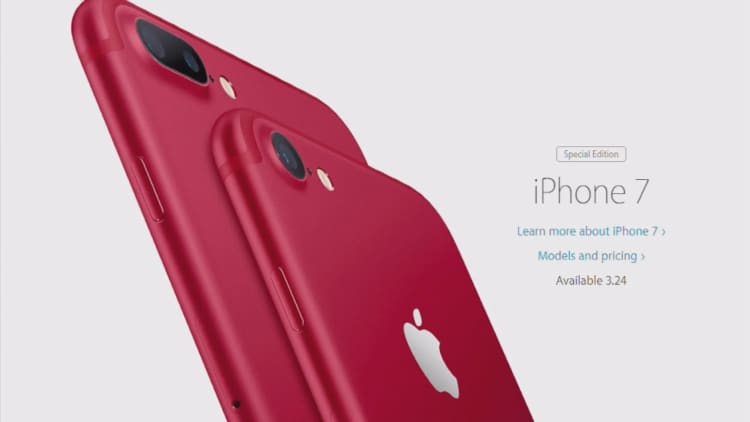
Apple unveiled product updates on Tuesday, including an updated iPad, new accessories and a red iPhone 7 and 7 Plus.
The announcement lacked the fanfare of some of Apple's formal product launches. Some called the reaction muted, while others said Apple's tablets seem to be "on the decline."
But the overlooked expansion of Swift Playgrounds could speak just as much to Apple's ruthless forward-looking attitude.
Apple tends to pivot hard toward where it thinks technology is headed — remember the removal of the headphone jack? The numbers show pretty clearly where the future of the iPad growth is: it's the next generation, it's overseas, and Apple may be designing with that in mind.
Apple said on Tuesday that Swift Playgrounds would be available in Simplified Chinese. Swift Playgrounds is an app, only available on iPads, that helps kids learn to code through games.
Not only does Playgrounds help kids learn to code, but it teaches them Apple's new coding language, Swift, released in 2014.
So while the fogies are using Apple's old coding language, the next generation might adopt Swift and fuel Apple's growth as a services company, especially in China, a historically difficult market for U.S. internet companies. The release of Swift Playgrounds in Simplified Chinese came on the heels of CEO Tim Cook's visit to China.
Consider that iPad sales overall fell 22 percent in the holiday quarter — but in mainland China and India, the product had double-digit growth, Apple said in January.
"I view it as a seeding strategy for a company that has established itself as a golden consumer brand," said Daniel Ives, senior vice president of finance and corporate development at mobile enterprise company Synchronoss Technologies. "Education is a major vertical that Apple, as well as other technology stalwarts, must continue to successfully penetrate."
Getting kids hooked has historically been part of Apple's long game for the iPad — Steve Jobs once told Barack Obama that it was "absurd" that teachers still used chalkboards instead of iPads.
It worked.
"Almost every single trend we've identified has started in the younger generations. As they age, they don't become like the older generation. Quite the opposite. The older generation starts to become like them," said Kevin Westcott, vice chairman and U.S. media and entertainment leader, Deloitte. "The exception to this pattern was the adoption of tablets. They came into households at older generations and got handed down."
Increasingly, students have been lured by cheaper options, like Chromebooks, pressuring Apple to release an inexpensive product, Ives said.
"With Google (Chromebooks) and Microsoft very embedded in the educational market, Apple needed to tweak their gameplan on this front with a more affordable iPad and now the industry is watching to see the potential impact and adoption changes," Ives said.
The growth in China and India, and the rise of the Chromebook, puts Apple's new price point of $329 — the cheapest ever for a new iPad — into perspective. In the United States, average yearly GDP per capita sat around $56,000, last time the World Bank measured. Mainland China is at $8,000 and India is at just under $1,600.
Plus, iPads now have SIM cards and LTE connectivity, which can be key in areas of countries like India where cell phone networks are faster gateways to the internet than Wifi or broadband.
Apple also doubled down on storage for the iPhone SE on Tuesday — the cheapest iPhone ever by starting price. Swift Playgrounds was also released in Japanese, French, German and Latin American Spanish.
So even if you don't want a thicker, heavier iPad, a child in India might.
"I think developing markets are key for Apple going forward with a product portfolio that is built for successfully ramping its presence with the right price points," Ives said. "It's a balance between its traditional sweet spot on the high end but also having products geared for the price-sensitive education market and potentially developing markets."
— With reporting by CNBC's Christine Wang


